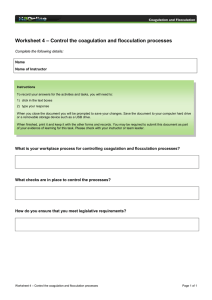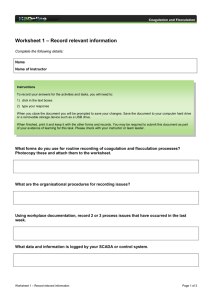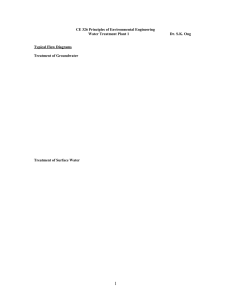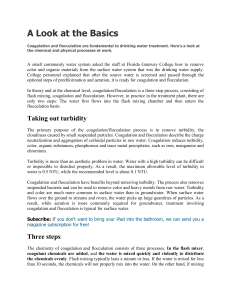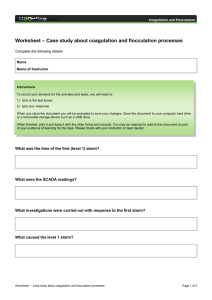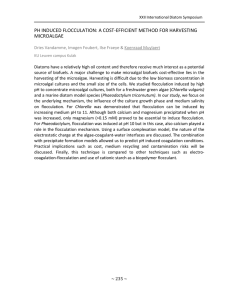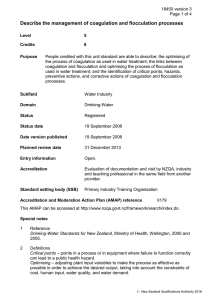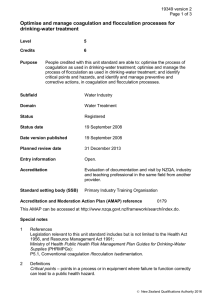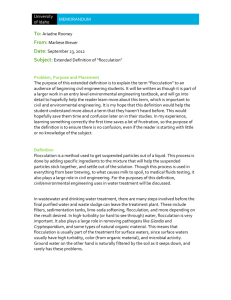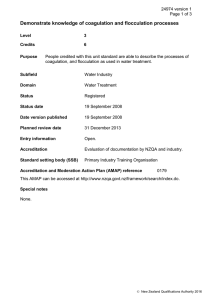Lecture-12
advertisement
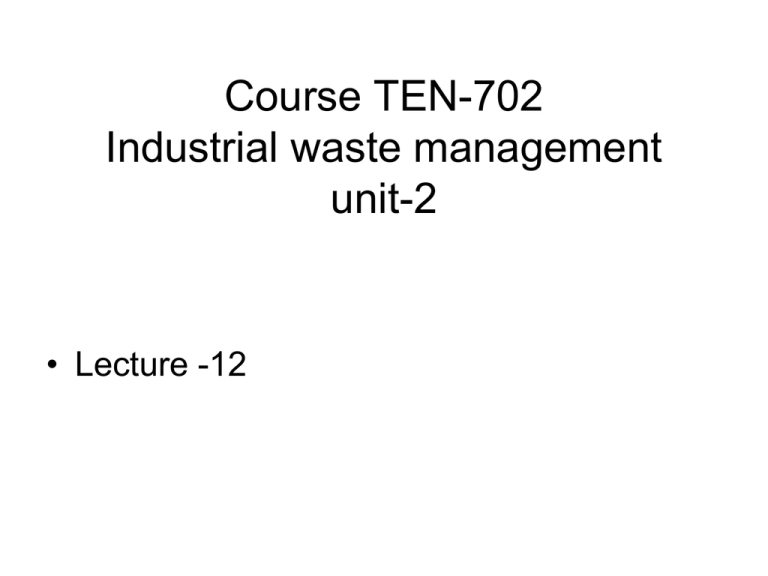
Course TEN-702 Industrial waste management unit-2 • Lecture -12 Industrial Wastewater Treatment • Physical/chemical treatment • Biological treatment • Thermal treatment Treatment needed will depend on the type and concentration of pollutants in the wastewater Rapid Mixing • Used to blend chemicals and water being treated • Retention time from 10 - 30 sec. • Mechanical mixing using vertical-shaft impeller in tank with baffles (Source: Water Supply and Pollution Control, 5th ed. W. Viessman, Jr. and M.J. Hammer, Harper Collins College Publ. 1993) Rapid Mixing Coagulation and Flocculation • Goal: To alter the surface charge of the particles that contribute to color and turbidity so that the particles adhere to one another and are capable of settling by gravity Colloids • Small particles (0.001 to 1 m) • Usually negatively charged • Particles repel so suspension is considered stable Coagulation and Flocculation • Coagulation (process) Colloidal particles (0.001 - 1 m) + + + + + + + + + + + ++ ++ + + + + ++ + + ++ + + + + ++ + ++ + + + + floc (1 - 100 m) Coagulant • Non-toxic and relatively inexpensive • Insoluble in neutral pH range - do not want high concentrations of metals left in treated water Concentration Coagulants • • • • Alum: Al2(SO4)3.14H2O Ferric chloride: FeCl3 Ferric sulfate: FeSO4 Polyelectrolytes How does alum work? • Al2(SO4)314H2O 2Al3++ 3SO42-+ 14H2O • 2Al3+ + colloids neutralize surface charge • 2Al3+ + 6HCO3- 2Al(OH)3(s) + 6CO2 • If insufficient bicarbonate is available: Al2(SO4)314H2O 2Al(OH)3(s) + 3H2SO4 14H2O • Optimum pH: 5.5 to 6.5 • Operating pH: 5 to 8 -+ Flocculation • Paddle units rotate slowly, usually <1 rpm • Velocity of water: 0.5 - 1.5 ft/sec • Detention time of at least 20 min (Source: Water Supply and Pollution Control, 5th ed. W. Viessman, Jr. and M.J. Hammer, Harper Collins College Publ. 1993) Flocculation Assignment-4 • Discuss the effects of mixing on coagulation and flocculation process in detail. In next lecture we will discuss sedimentation and chemical treatment Thanks!
